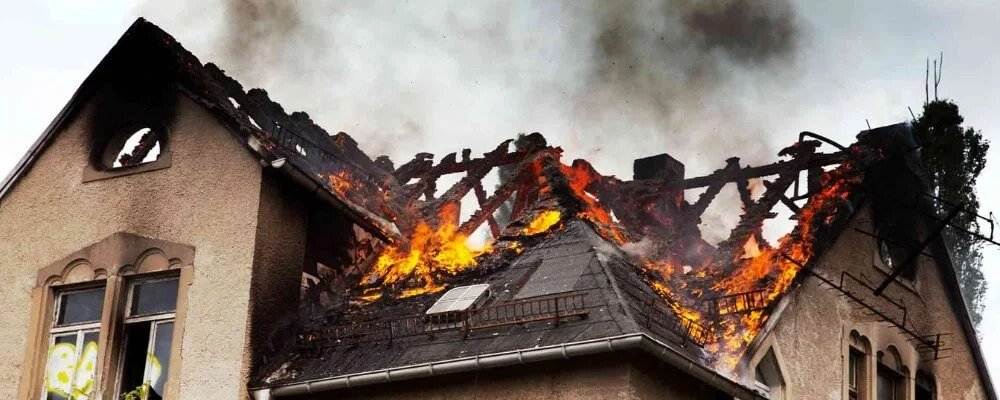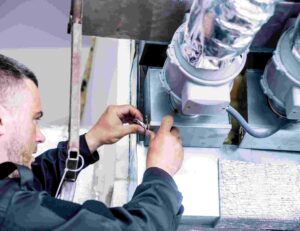Blogs
Understanding the Fire Restoration Process: A Comprehensive Guide

Fire, a force of nature that has both fascinated and terrified humanity for centuries, can leave a devastating aftermath in its wake. Beyond the immediate damage caused by flames, the aftermath of a fire can be overwhelming. Fortunately, the fire restoration process exists to help individuals and communities recover from such disasters. In this comprehensive guide, Intensa Dry will help you discover the intricate and often intricate steps involved in fire restoration. From assessing the extent of the damage to rebuilding and reclaiming spaces, this guide aims to shed light on the multifaceted aspects of the fire restoration journey. Join us on this exploration of rebuilding and renewal in the face of one of nature’s most destructive forces.
I. Assessing the Extent of Damage
The first critical step in the fire restoration process is assessing the extent of the damage caused by the fire. This involves a thorough examination of the affected area, taking into account not only the visible destruction but also the hidden impacts that smoke and soot can have on structures. Professional restoration teams often employ advanced technologies such as thermal imaging to identify areas that may appear undamaged but carry latent risks. The goal at this stage is to create a comprehensive inventory of the damage, outlining what can be salvaged and what needs replacement.

II. Securing the Property
Once the assessment is complete, the next priority is securing the property. Fire can compromise the structural integrity of a building, making it unsafe for inhabitants and restoration crews. Temporary structural supports may be installed to prevent further collapse, and vulnerable areas like broken windows or damaged roofs are boarded up or covered to protect against the elements. Additionally, security measures are implemented to prevent unauthorized access, safeguarding the property from potential looting or further damage.
III. Water and Smoke Damage Remediation
In many fire incidents, water damage is an inevitable consequence of firefighting efforts. Excess water can lead to mold growth and further structural damage if not addressed promptly. Simultaneously, the pervasive nature of smoke can infiltrate every nook and cranny, leaving behind not only unpleasant odors but also hazardous residues. The remediation process involves extracting standing water, dehumidifying the space, and employing specialized techniques to eliminate smoke odors. This phase sets the stage for the subsequent restoration steps by ensuring a clean and dry environment.
IV. Salvaging and Cleaning Personal Belongings
One of the emotionally challenging aspects of fire restoration is dealing with personal belongings that may have been damaged or contaminated. Professional restoration teams often work in collaboration with clients to identify items that can be salvaged. These items are meticulously cleaned and restored using specialized techniques, including ultrasonic cleaning for delicate objects. The goal is not only to salvage valuable possessions but also to provide a sense of continuity and comfort to those affected by the fire.
V. Rebuilding and Reconstruction
With the groundwork laid by damage assessment, property securing, and remediation, the focus shifts to rebuilding and reconstruction. This phase involves not only restoring the physical structure but also addressing any code or safety upgrades required to meet current standards. The extent of reconstruction varies depending on the severity of the fire, ranging from cosmetic repairs to complete structural rebuilds. Collaboration between restoration professionals, contractors, and insurance providers is crucial to streamline this complex process and ensure that the restored property meets or exceeds pre-fire conditions.
VI. Post-Restoration Inspection and Quality Assurance
As the physical restoration nears completion, a thorough inspection is conducted to ensure that every aspect of the property meets the required standards. This includes checking for structural stability, electrical safety, and adherence to local building codes. Quality assurance measures may involve third-party inspections to provide an unbiased assessment of the restoration work. This meticulous attention to detail is essential to guarantee the safety and satisfaction of the occupants returning to their restored space.

VII. Emotional and Psychological Support
Beyond the tangible aspects of fire restoration, it’s crucial to acknowledge the emotional toll such an event can take on individuals and communities. Restoration teams often collaborate with mental health professionals to offer support and resources for those grappling with the trauma of a fire. Rebuilding extends beyond bricks and mortar; it encompasses the restoration of lives and a sense of security.
Conclusion
The fire restoration process is a multifaceted journey that goes beyond the physical act of rebuilding. It involves a systematic approach, from assessing the initial damage to the final inspection, with each step playing a crucial role in restoring not only structures but also the lives and well-being of those affected. By understanding the intricacies of this process, and the importance of the existence of a team of highly skilled professionals, we gain insight into the resilience of individuals and communities who, in the face of devastation, find the strength to rebuild and reclaim what was lost.
FAQ’s
What is the meaning of fire restoration?
Fire restoration is the process of repairing and rebuilding structures and belongings damaged by fire. It involves assessing the extent of the damage, cleaning, repairing, and reconstructing to return the affected space to its pre-fire condition.
How do you restore after a fire?
After a fire, restoration involves assessing and documenting damage, securing the property, and then addressing issues like water and smoke damage. The process includes salvaging belongings, rebuilding structures, and conducting post-restoration inspections for safety and quality assurance, all while providing emotional support to those affected.
What is restoration process?
The restoration process involves assessing and repairing damage to return a space to its original or improved condition. It includes phases like damage evaluation, remediation, reconstruction, and post-restoration inspections to ensure safety and quality.
What are the five main components of restoration?
The five main components of restoration are assessment, involving damage evaluation; remediation, addressing issues like water and smoke damage; rebuilding, reconstructing structures; inspection, ensuring safety and quality; and emotional support, recognizing the holistic nature of the restoration process.
What is the principle of successful restoration?
The principle of successful restoration lies in a systematic approach encompassing thorough damage assessment, efficient remediation, meticulous reconstruction, rigorous post-restoration inspection, and compassionate emotional support, ensuring a comprehensive recovery from the aftermath of a fire.

